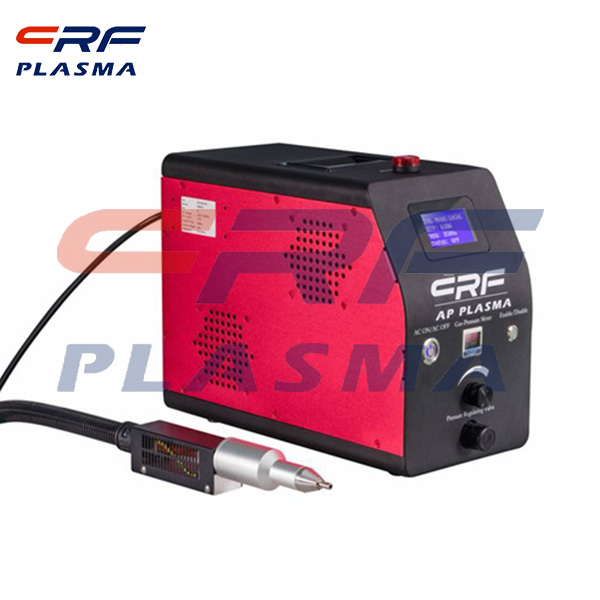
Welcome to Shenzhen Sing Fung Intelligent Manufacturing Co., Ltd.
E-mail:shaobo@sfi-crf.com
Plastic plasma surface treatment
- Categories:Company Dynamics
- Author:plasma cleaning machine-surface treatment equipment-CRF plasma machine-Sing Fung Intelligent Manufacturing
- Origin:
- Time of issue:2020-10-23
- Views:
(Summary description)Plastic is a solid substance based on organic macromolecules, which can be synthesized artificially or modified by natural products. It can be divided into thermoplastic materials (fusible, castable, and mouldable) and thermosetting materials (castable only in monomer state, polymerizable), which are then cured. In the pure state, plastic is a good insulating material with densities between 0.9g/cm3 and 1.5g/cm3 (except in the foamy state). Generally speaking, it is combustible. Plastic has lower hardness, stiffness and strength than metal building materials. Different copolymers may have rubber elastic properties. Plastics can also be made harder than steel by various modifications, such as adjusting their electrical conductivity, through additives and fillers or by plasma surface processors. Typical defects on plastic surfaces: Adhesives, paints, printing inks and other adhesion performance is poor, low hardness, poor wear resistance; The following characteristics can be improved or completely changed by plasma treatment: the wettability and adhesion of coating can be obviously improved by plasma surface treatment for plasma activation and etching. Most plastics have very little surface tension. Its surface tension is generally lower than that of most liquids, which are the building blocks of binders, paints, and paints. As a result, the coating is less wettability and therefore less adhesion because most plastics have non-polar properties. The oxygen plasma surface treatment has a significant effect on the increase of surface tension of non-polar plastics, which forms polar bridge bonds due to the high activity of oxygen free radicals in the coated liquid. This increases the surface tension and wettability of the plastic, which increases the surface area of the plastic as it is etched, allowing it to bond better.
Plastic plasma surface treatment
(Summary description)Plastic is a solid substance based on organic macromolecules, which can be synthesized artificially or modified by natural products. It can be divided into thermoplastic materials (fusible, castable, and mouldable) and thermosetting materials (castable only in monomer state, polymerizable), which are then cured. In the pure state, plastic is a good insulating material with densities between 0.9g/cm3 and 1.5g/cm3 (except in the foamy state). Generally speaking, it is combustible. Plastic has lower hardness, stiffness and strength than metal building materials. Different copolymers may have rubber elastic properties. Plastics can also be made harder than steel by various modifications, such as adjusting their electrical conductivity, through additives and fillers or by plasma surface processors.
Typical defects on plastic surfaces:
Adhesives, paints, printing inks and other adhesion performance is poor, low hardness, poor wear resistance; The following characteristics can be improved or completely changed by plasma treatment: the wettability and adhesion of coating can be obviously improved by plasma surface treatment for plasma activation and etching.
Most plastics have very little surface tension. Its surface tension is generally lower than that of most liquids, which are the building blocks of binders, paints, and paints. As a result, the coating is less wettability and therefore less adhesion because most plastics have non-polar properties. The oxygen plasma surface treatment has a significant effect on the increase of surface tension of non-polar plastics, which forms polar bridge bonds due to the high activity of oxygen free radicals in the coated liquid. This increases the surface tension and wettability of the plastic, which increases the surface area of the plastic as it is etched, allowing it to bond better.
- Categories:Company Dynamics
- Author:plasma cleaning machine-surface treatment equipment-CRF plasma machine-Sing Fung Intelligent Manufacturing
- Origin:
- Time of issue:2020-10-23 08:49
- Views:
Plastic plasma surface treatment:
Plastic is a solid substance based on organic macromolecules, which can be synthesized artificially or modified by natural products. It can be divided into thermoplastic materials (fusible, castable, and mouldable) and thermosetting materials (castable only in monomer state, polymerizable), which are then cured. In the pure state, plastic is a good insulating material with densities between 0.9g/cm3 and 1.5g/cm3 (except in the foamy state). Generally speaking, it is combustible. Plastic has lower hardness, stiffness and strength than metal building materials. Different copolymers may have rubber elastic properties. Plastics can also be made harder than steel by various modifications, such as adjusting their electrical conductivity, through additives and fillers or by plasma surface processors.
Typical defects on plastic surfaces:
Adhesives, paints, printing inks and other adhesion performance is poor, low hardness, poor wear resistance; The following characteristics can be improved or completely changed by plasma treatment: the wettability and adhesion of coating can be obviously improved by plasma surface treatment for plasma activation and etching.
Most plastics have very little surface tension. Its surface tension is generally lower than that of most liquids, which are the building blocks of binders, paints, and paints. As a result, the coating is less wettability and therefore less adhesion because most plastics have non-polar properties. The oxygen plasma surface treatment has a significant effect on the increase of surface tension of non-polar plastics, which forms polar bridge bonds due to the high activity of oxygen free radicals in the coated liquid. This increases the surface tension and wettability of the plastic, which increases the surface area of the plastic as it is etched, allowing it to bond better.

Scan the QR code to read on your phone

TEL:0755-3367 3020 / 0755-3367 3019

E-mail:sales-sfi@sfi-crf.com

ADD:Mabao Industrial Zone, Huangpu, Baoan District, Shenzhen


















